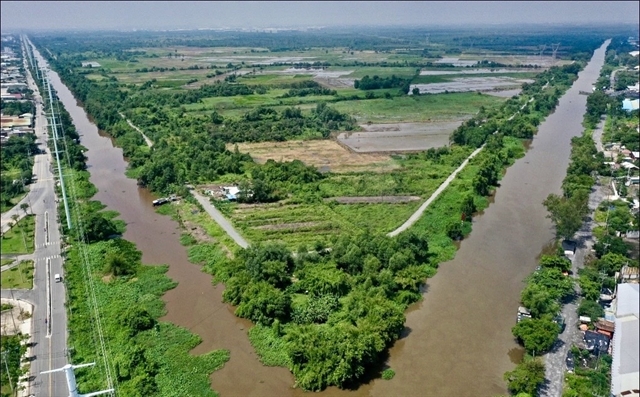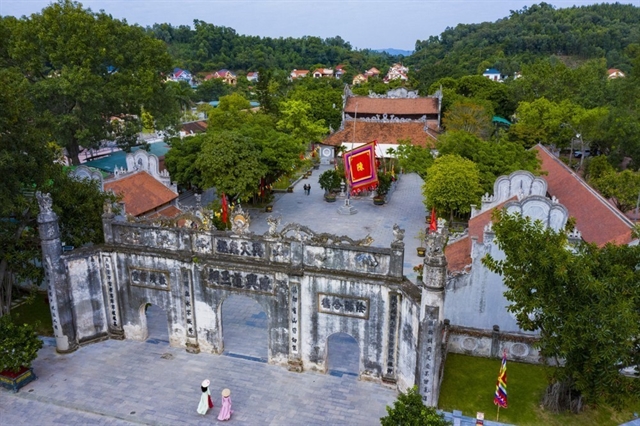 Society
Society


|
| Hà Nội Highway and Metro line No 1 in HCM City's District 2. The city Department of Transport has called for solutions to speed up major transport projects in the city. Photo sggp.org.vn |
HCM CITY — The HCM City Department of Transport has called for solutions to speed up the progress of major projects, including ring roads and railway stations, as part of its effort to develop a modern, highly connected transport system.
“At least five key transport projects are behind schedule due to a lack of capital and tardiness in site clearance,” the department said.
Ring Road No. 3, a national key project that connects provinces and cities in the southern key economic region, is far behind schedule. The VNĐ55.8 trillion (US$2.4 billion) road would be 90km long and pass through HCM City and Đồng Nai, Bình Dương and Long An provinces.
It is expected to reduce traffic pressure on roads in central HCM city, and shorten travel time between HCM City and provinces.
Construction has been divided into four sections. However, only the first section of 16.3km from Tân Vạn to Bình Chuẩn (Bình Dương Province) has been completed. It accounts for 18 per cent of the total length.
The road will be linked to national highways 1A and No. 22, and the expressways Bến Lức-Long Thành, HCM City-Trung Lương, HCM City-Long Thành-Dầu Giây and HCM City-Mộc Bài.
Ring Road No. 4 will be a 198km expressway running through HCM City and the provinces of Bà Rịa-Vũng Tàu, Bình Dương, Đồng Nai and Long An. It is expected to cost around VNĐ99 trillion ($4.3 billion).
The road would enhance inter-regional links, especially with Hiệp Phước Port Urban Area in Nhà Bè District, helping boost economic growth in the southern key economic region and the Mekong Delta.
The department said that investment policies for the ring roads must be approved in the 2020-25 period to enable quick acquisition and clearance of land, calls for bids, and launch of construction.
The Government approved the two ring road projects 10 years ago. They are expected to cost a total of VNĐ154 trillion ($6.6 billion).
Bình Triệu, Thủ Thiêm stations
According to an adjusted master transport plan to 2020, which was approved in 2013, the Bình Triệu-Hoà Hưng overhead railway was expected to be built in the 2021-2025 period to reduce the number of railway crossings in inner HCM City.
In addition, two passenger stations were slated to be built, including one at the current Sài Gòn railway station covering 6.14 ha and the Bình Triệu railway station on 41 ha.
But no progress has occurred, according to the department.
In addition, the Thủ Thiêm station project, which includes the North-South high-speed railway, the HCM City light railway to the proposed Long Thành international airport, and other types of public transport, were all approved in 2013 but have not been implemented.
The department recommended that detailed planning of the Thủ Thiêm station be studied. It would cover an area of 14,7163 ha.
HCM City-Mộc Bài Expressway
The department also asked the city People’s Committee to conduct a pre-feasibility study for the HCM City-Mộc Bài Expressway project.
Former PM Nguyễn Xuân Phúc approved the Ministry of Transport’s proposal to give HCM City the authority to approve investment decisions for the expressway.
The expressway would link Ring Road No 3 in HCM City’s Hóc Môn District with the Mộc Bài International Border Gate on the Việt Nam-Cambodia border in Tây Ninh Province.
The expressway project is divided into two investment phases. Total capital is estimated at VNĐ13.6 trillion, including site clearance costs sourced from the State budget.
The first stage will cost VNĐ10.7 trillion under a Public-Private Partnership investment.
Construction is expected to be completed by 2025 with at least four lanes, and will be expanded to six or eight lanes by 2045.
Recently the city government approved an infrastructure development plan over the next 10 years, which includes solutions for management policies, transport infrastructure, and capital and investment policies. — VNS




